Acknowledgments
Many people helped bring this book to fruition. First, I am happily indebted to my agent, Philip Spitzer, for his faith and perseverance, and to my editor, Peter Wolverton, associate publisher of Thomas Dunne Books, for his skillful guidance and encouragement. Tim Wendel, Frank Provenzano, and Mike Varney provided invaluable assistance by reading and critiquing the manuscript, and Ernie Harwell extended numerous kindnesses. I also appreciate the efforts of Carolyn Dunkley and Joseph Rinaldi, both of Thomas Dunne. Further, I am thankful to Bob Costas, Elmore Leonard, Sparky Anderson, Larry Ritter, Dale Petroskey, Paul Dickson, and Tom Goldstein for their words, and to David Poremba of the Detroit Public Library, Carol Souchock of the Macomb County Library, Mark Cunningham, Tyler Barnes, Christina Branham, Melanie Waters, Steve Trudell, Steve Olsen, Sandy Stankiewicz, Bernice Cynowa, Dallas Felder, and my friends at the Voice newspaper for their courtesies and efforts behind the scenes.
At the stadium I enjoyed the company of hundreds of fans. In addition to those mentioned elsewhere in the book, I thank these sources: Jack Weigel, Tony Campeau, Jim and Jami Turano, Mike and Tim Gleason, Doris Bertalan, Bruce Kajo, Naoto Amaki, Robb Wilson, Andrew Alexander, Howard Krugel, Joel Scott, Brian Felder, Michael Foust, Michael Warholak, Michael Happy, Ron Studley, Jim Cleverley, Ric Wellman, Jerry Keranen, Joe and Dorothy Stabile, Sharon Linsday, Yvonne Heacock, Ray Trella, Bruce and Jon Kaufman, Lamont Orr, Bill and Pete Leonard, Chuck Klonke, Bill Anderson, Lloyd Wallace, Allan Wood, Laura Kaminker, Jerry Curtsinger, Jack Golds, Chuck Morgan, Dave Pidgeon, Jack Cox, Shawn Ellis, Dwight Allen, Bill Robinson, Anthony Lewandowski, Geoffrey Rimshas, Dixie Tourangeau, Joe Kedra, and anyone else whose name escaped my notes. Finally, this book would not have been possible without the support of family, particularly my wife, Beth; our three sons, Zack, William, and Taylor; my father, Joe Stanton; and my uncles. I treasure them all.
April 1999

Ty Cobb. Photo courtesy of Burton Historical Collection, Detroit Public Library.
Game 1: Monday, April 12 Eighty-seven years earlier on a Saturday in April 1912, days after the Titanic sank, the Detroit ball club played its first game on this diamond. It was called Navin Field and it was about half the size then, jammed with more than 24,300 fans. Clevelands Shoeless Joe Jackson scored the inaugural run and Ty Cobb responded a half inning later by stealing home. The Tigers won 65 in eleven innings, christening a field that over the decades has hosted all the greats. Ruth and Gehrig. DiMaggio and Williams. Mantle, Mays, and Aaron. Nolan Ryan and Roger Clemens. Bostons Fenway Park opened the same day. They are Americas oldest ballparks.
Eighty-seven years earlier on a Saturday in April 1912, days after the Titanic sank, the Detroit ball club played its first game on this diamond. It was called Navin Field and it was about half the size then, jammed with more than 24,300 fans. Clevelands Shoeless Joe Jackson scored the inaugural run and Ty Cobb responded a half inning later by stealing home. The Tigers won 65 in eleven innings, christening a field that over the decades has hosted all the greats. Ruth and Gehrig. DiMaggio and Williams. Mantle, Mays, and Aaron. Nolan Ryan and Roger Clemens. Bostons Fenway Park opened the same day. They are Americas oldest ballparks.
It was that year on a Tuesday in July when Theodore Stankiewicz, a twenty-six-year-old welder, married Anna Tuchewicz at St. Hyacinth Church in Detroit, beginning a union that would produce ten children and a thousand stories. Teddy, as pals called him, had fled Poland after being drafted into the German army. He followed his two brothers, who at six foot five stood nearly a foot taller. We know little about his life in Europe, except that he grew up on a farm and lost his father early. Anna, Teddys bride, was eighteen. She worked in a cigar factory and like her younger siblings lived with her parents, a stern Catholic couple from Europe. Nine months after the wedding, they began their family. First Clem was born, then Edward, Theodore, and Irene. While expecting her fifth baby in early 1920, Anna took ill and lost her eyesight. She spent months in bed, watched over by her sisters and mother, saying rosaries and praying to Saint Anne to save her child, telling God that while she might not be worthy of His mercy, the baby should be spared. For Anna, every joy and every tragedy found its roots in her faith. In March when the child was born, her sight returned. She pronounced both as miracles and bestowed upon her son, my father, the most sacred name she could imagine, Joseph Marion.
Generations of Detroiters have watched baseball at Michigan and Trumbull Avenues. My grandfather cheered Cobb and Wahoo Sam Crawford. As a teen in the 1930s my dad packed peanuts beneath the bleachers for a chance to behold the G-Men: Gehringer, Greenberg, and Goslin. Later he took me to see Kaline. Now I take my sons and they have their own favorites. The tradition is not unique to us.
Game time is a good hour away when Bobby Higginson strides to the bench after batting practice, his unsmiling lips framed by a tight goatee.
Hand this to him, he says, pointing the barrel of his black baseball bat at an unsuspecting boy two rows back. Higginson, an intense right fielder prone to outbursts, slides the cracked bat over the glossy roof of the Tiger dugout. He pauses, watching that it gets to Mickey Bozymowski, and disappears down the steps into the clubhouse.
The boy holds the bat like a sacred sword. He caresses its neck, sticky with pine tar, and looks up to his dad, who says, Oh man! Michael Bozymowski has been a baseball fan since the 1960s. Oh man! he says. I dont believe this.
The teams most popular player has anointed Michael Bozymowskis son, at the home opener no less. Does Higginson realize that he has etched a moment into one familys historythat in sixty years Mickey Bozymowski will be recalling this day for his grandchildren? Mickeys dad knows it. He grins, shakes his head, and lets his eyes drift over the grass field.
I just had to be here, he says.
Nearby, Alan Trammell, the former shortstop and first-year batting coach, gives autographs at the edge of the dugout and a knot of fans tightens toward him. In 1978 as I was finishing high school, Trammell was beginning his first full season. He and Lou Whitaker were the Golddust Twins. On this Monday in spring, with his shades perched on the bill of his ball cap, he looks younger than forty-one. He is trim, and boyish in the face. The acne scars of his youth have smoothed.
You the man, Al, someone shouts.
Trammell signs a baseball and politely excuses himself. Ive got to go to work now, he says, as if he needs to explain.
The park is a circus of sound. The click of ball meeting bat echoes from the batting cage. The Jumbotron screen over center field blares highlights of last years Sammy Sosa-Mark McGwire home-run race.
Ice-cold beer, yells an unpracticed vendor, the words strange on his tongue. Wash down the pretzels. Wash down that popcorn. Ice-cold beer.
Few are buying yet. The veteran, Art Witkosky, knows this. He resembles a white-haired Johnny Cash and the only thing he is selling at this moment is himself. Witkosky hoists a bag of buns above his head, posing for the press. Though hes been hawking hot dogs since Nixons presidency, Witkosky never tires of opening day.
Above home plate in the WJR radio booth, Hall of Famer Ernie Harwell prepares for his broadcast. Harwell is one of my boyhood idols, a fatherly figure I listened to in bed in the dark on late summer evenings, with the Tigers playing on the West Coast and the signal coming in clear on the transistor radio and the crickets chirping outside my window. I imagine him a considerate man and I hope to meet him. Callously fired years earlier, Harwell, eighty-one, has returned to do play-by-play, his fortieth Detroit season. In a Greek sailors cap and tan overcoat, he settles into the open-air booth behind fencing that protects him from foul balls, lest he meet the fate of H. G. Salsinger, the late sportswriter who took a blinding ball to the face in 1954 and never returned to the park.


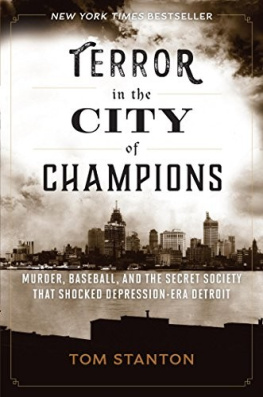
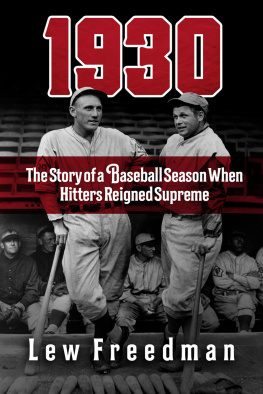
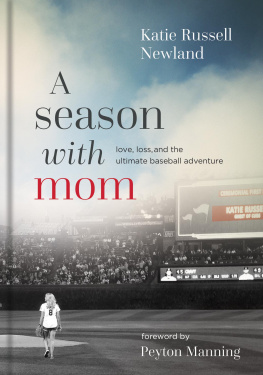

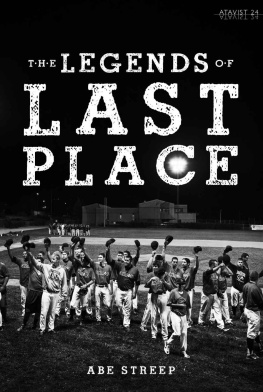
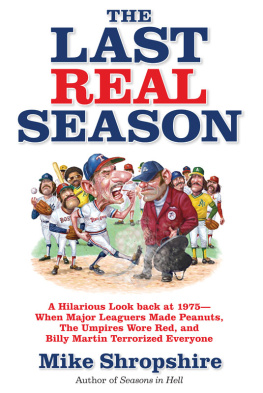
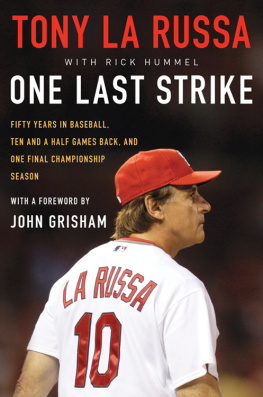
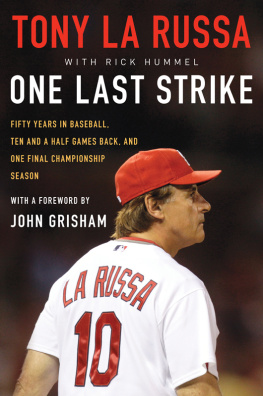

 Eighty-seven years earlier on a Saturday in April 1912, days after the Titanic sank, the Detroit ball club played its first game on this diamond. It was called Navin Field and it was about half the size then, jammed with more than 24,300 fans. Clevelands Shoeless Joe Jackson scored the inaugural run and Ty Cobb responded a half inning later by stealing home. The Tigers won 65 in eleven innings, christening a field that over the decades has hosted all the greats. Ruth and Gehrig. DiMaggio and Williams. Mantle, Mays, and Aaron. Nolan Ryan and Roger Clemens. Bostons Fenway Park opened the same day. They are Americas oldest ballparks.
Eighty-seven years earlier on a Saturday in April 1912, days after the Titanic sank, the Detroit ball club played its first game on this diamond. It was called Navin Field and it was about half the size then, jammed with more than 24,300 fans. Clevelands Shoeless Joe Jackson scored the inaugural run and Ty Cobb responded a half inning later by stealing home. The Tigers won 65 in eleven innings, christening a field that over the decades has hosted all the greats. Ruth and Gehrig. DiMaggio and Williams. Mantle, Mays, and Aaron. Nolan Ryan and Roger Clemens. Bostons Fenway Park opened the same day. They are Americas oldest ballparks.